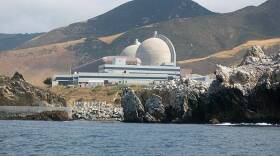The consumer watchdog arm of the California Public Utilities Commission says millions of Pacific Gas & Electric customers should not have to bear the brunt of the utility’s misdeeds if it was responsible for two of the most destructive wildfires in California.
“We should definitely not assume that because PG&E is heading to bankruptcy court that ratepayers are going to end up footing the bill again,” said Elizabeth Echols, executive director of the Public Advocates Office, whose mission is to obtain the lowest rate for safe and reliable service from investor-owned utilities. “We’re here to prevent that from happening.”
For its part, PG&E isn’t making any commitments about whether its customers or its shareholders will bear the cost. Company spokeswoman Lynsey Palo noted that the PUC reviews electricity, gas and water rates, and that those rates are influenced by regulatory actions, environmental requirements, commodity prices, changes in financial markets, demand and supply imbalances, infrastructure restrictions and more.
“This is a long process that we’re just announcing,” she said, “and I can’t speculate on what changes, if any, could result.”
Following back-to-back years of deadly wildfires, PG&E announced this week that it intends to file for Chapter 11—a bankruptcy that allows troubled corporations to restructure their finances—in the face of $30 billion in potential liabilities stemming from the 2017 Tubbs Fire in Napa and Sonoma counties and last year’s Camp Fire in Paradise.
The five-member Public Utilities Commission, the state agency that oversees investor-owned utilities, has a role in bankruptcy proceedings and must sign off on any potential settlement. That includes helping shape how PG&E will emerge from bankruptcy, perhaps as a new company, broken up, sold off or turned into municipal agencies. And it includes whether PG&E should be permitted to pass liability costs to 16 million gas and electric customers in Northern and central California.
The last time PG&E filed for bankruptcy reorganization back in 2001, the commission did OK a settlement that let the utility pass on higher rates—but that was because the debt was largely the result of market price manipulation outside of PG&E’s control. That cost customers about $6 to $8 billion in above-market prices, or roughly $1,300 to $1,700 per customer, over a span of several years.
“In the prior bankruptcy, ratepayers wound up footing the bill in no small way,” said Darwin Farrar, general counsel of the Public Advocates office. “This is a very different situation. In regard to the wildfires, this is about whether or not PG&E acted in a reasonable and prudent manner. Did they do what they were supposed to do to prevent the wildfires?”
Echols said because there’s potential malfeasance, that could prevent PG&E from passing liability costs to customers. The precedent, she said, was set in 2017 when the commission blocked San Diego Gas & Electric from passing on $379 million in liability costs stemming from a 2007 wildfire. In a unanimous vote, the commission found the utility’s management of its facilities unreasonable.
While PG&E has been found to play a role in numerous recent wildfires, Cal Fire has not yet made a determination in the two most destructive fires. The Tubbs Fire killed 22 people and destroyed 5,643 structures while the Camp Fire killed 86 people and destroyed 18,804 structures, according to Cal Fire.
On Thursday, a judge blamed uninsulated power conductors owned by PG&E for the spate of recent wildfires. Previously, PG&E reported an outage and damage to a transmission tower in the area an ignition point in the Camp Fire.
But Cal Fire investigators have yet to indicate when they will release their determination of the fire’s cause.
The Legislature has balked at the idea of “bailing out” PG&E. Gov. Gavin Newsom earlier this week announced a task force led by his chief of staff to monitor the situation, but he hasn’t called for a special legislative session or any other measure to help PG&E avert bankruptcy.
After the 2017 wildfire season, PG&E launched an intense—but unsuccessful—lobbying campaign to loosen fire liability laws. Under a legal doctrine called “inverse condemnation,” utilities are liable for any wildfire damage traced to their equipment even if they were not negligent in maintaining it.
The Legislature did pass sweeping wildfire prevention bill making it easier for utility companies to absorb the cost of fire damages by borrowing money and charging customers to pay it back over many years. Now PG&E can use a state-authorized bond to pay off claims against the company over the 2017 fires. Customers would pay off those bonds through higher monthly bills (roughly $5 per year for every $1 billion in bonds issues) if state regulators determine that the company acted reasonably in maintaining equipment.
Even if PG&E did not act reasonably, the new law limits what it would have to pay by conducting a bankruptcy stress test to determine how much liability it could withstand. It could pass the rest of the cost on to customers.
This mechanism for conducting a stress test yet to be used. Lawmakers never applied it to potential fires in 2018, creating a gaping oversight.
CALmatters.orgis a nonprofit, nonpartisan media venture explaining California policies and politics. This is an abridged version of the full story, which is available at CALmatters.org.





